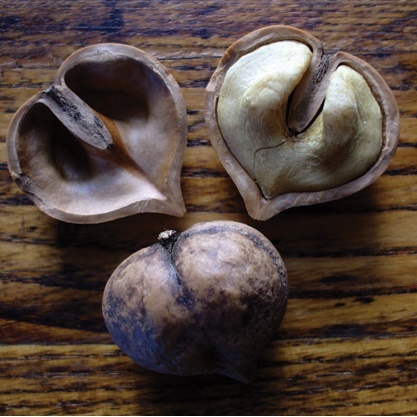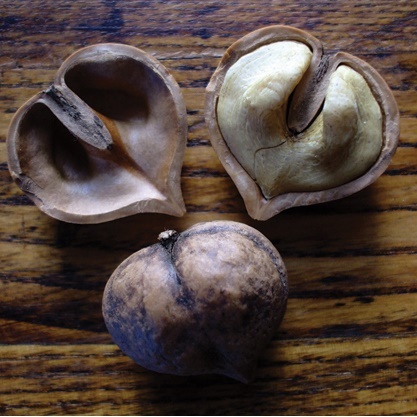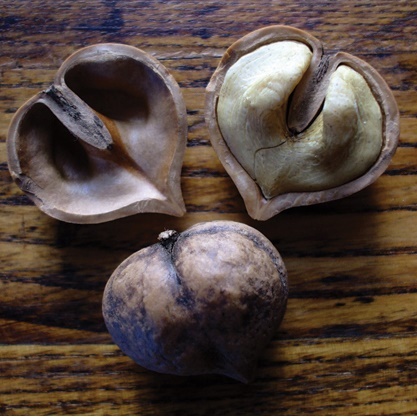Subtotal: $42.95
Nut : HEARTNUT 60-100cm (24-36") On Own Root
$37.95
A variety of the Japanese walnut, these heart-shaped nuts open like a locket when tapped on its side easily releasing a kernel that is mild tasting, buttery and slightly sweet, unlike typical walnuts that can have a bitter taste. With its huge fern-like leaves, pendulous catkins and hanging clusters of nuts, the Heartnut tree makes a stunning ornamental. A broad round top tree that can easily grow to be as wide as it is tall, making it an excellent shade tree if you have the space. Mature seedling heartnuts can be over 15m (50') wide and tall, yielding over 90kg (200 lbs) of nuts per tree! We offer 2 types of heartnuts: grafted (genetically identical) and seedlings.
(Juglans ailantifolia var. cordiformis)
Heartnut seedlings are more hardy than grafted varieties. However, they do take longer to begin producing- usually 4-7 years. Nut quality will vary from tree to tree and in most cases they do not crack as easily. With a bit of luck, you could also end up having a seedling tree that is as good or better as any grafted variety! Heartnuts have possibly the most potential of any nut tree in Canada. Mature height 10-16m (30-55')
PLANT 2 FOR POLLINATION | ZONE 4/5 | HARVEST: OCT.
Only logged in customers who have purchased this product may leave a review.
 Nut : HAZELNUT 100-150cm (3- 5') On Own Root
Nut : HAZELNUT 100-150cm (3- 5') On Own Root 






Reviews
There are no reviews yet.